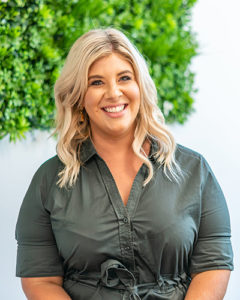It’s now about 45 years since the first marketing email was sent back in 1978. So, why are we still talking about this decidedly middle-aged marketing technique?
Because some things get better with age.
Though you might feel trendier producing TikTok videos or Instagram reels, you may well get better results from good, old-fashioned, tried-and-tested email marketing – especially as a healthcare professional.
What is email marketing?
Email marketing – also known as electronic direct mail, or EDM in marketing-speak – means using email to promote your products or services and to nurture a relationship with potential or existing patients or clients.
How does email marketing work?
Much of it can be automated using a number of excellent software programs like MailChimp and others. Some use artificial intelligence to run A/B tests of subject lines or calls to action (like ‘book now’) to see what performs best.
You can also segment your audience based on demographics and then send them targeted messages on relevant subjects. You can also allocate them to a nurture sequence where you send them a series of tailored messages over a few weeks or months.
Emails to new patients could:
- Explain what to bring to their first visit, where to park and where to find the best coffee nearby
- Follow-up after their first visit – share links to your social media channels and encourage them to call if they have any remaining questions after their visit
- Share your story – why you chose this profession, what motivates you, your practice’s purpose or ethos and what you love about helping your patients.
To encourage ongoing engagement from existing patients you could share:
- Tips for preventing or managing relevant health issues
- Links to valuable content such as your latest blog, your newest social posts or an ebook or video you’ve created
- Information that busts some myths about your profession or helps to demystify a complex health condition
- Answers to FAQs.
If you haven’t seen a patient in over 12 months, you could try to re-engage them with a friendly email reminding them that you’re still there or tempting them back with a special offer (remember to state the offer’s terms and conditions to comply with AHPRA’s advertising guidelines).
Why does email marketing work well for healthcare professionals?
Healthcare practices usually have a patient database that includes emails – and yet many do not make use of this easily available resource for marketing purposes.
Here are 6 reasons to use email marketing:
1. It’s enduringly popular
In 2020, Australia had the second highest click-to-open rate in the world for marketing emails according to a research study done by Sprint Law.
2. It gives you direct access
Some of your patients are on TikTok, some are on Instagram, others on Facebook and most search on Google. But they’re all on email.
Furthermore, because they wanted your services, your patients have provided you with their real contact details. No-one’s made up a fake email address to get you off their back, as they might do with store-based rewards programs.
So, collect email addresses whenever you can. You could create some gated content on your website that can only be downloaded once people provide an email address. And you should certainly ask all new patients for their email address as part of your registration process.
3. It helps you build relationships with a range of patients
Your database probably includes a number of different types of patients – potential ones, new ones, loyal ones and ones you haven’t seen for a while.
Email helps you deepen relationships with each type of patient. That’s important in both attracting new patients and retaining existing ones. You can nurture them, encourage them and re-engage them, prompting each one to take the next step.
4. You know what to write about
Your patients are dealing with injuries, illness or other stresses. And you know how to help.
You engage with patients every day. You know what questions they ask, what they’re concerned about and what they’ve often misunderstood.
Sure, they could look online. But they already know and trust you. They’re far more interested in your thoughts than Dr Google’s.
5. People will read your email
MailerLite interrogated data on email marketing across over 40 industries and found that medical, dental and healthcare emails had the third-highest open rate in 2022 (33.17%), outranked only by emails from government agencies or recruiters.
That means, if you put the effort into email marketing, 1 in 3 people on your list is likely to open it. That’s pretty good.
6. Email enhances your social media marketing
Email marketing helps you get more bang for your social media marketing bucks. This pairing is every bit as good as matching a rich aged port with a mellow Blue Stilton and enjoying how each brings out the flavour of the other.
Some of your patients will see your new blog or video when you post it to your social media channels. Others, though, will be far too busy to browse through their feed. Emailing them means they can follow a link to your social media channel whenever they’re ready and engage with your content then.
How can Splice Marketing help?
Email marketing has great value but success involves:
- Cleaning your database
- Segmenting your patients based on their conditions, their place in the sales funnel or their level of engagement with you
- Creating a series of carefully targeted nurture sequences relevant to each group of patients
- Creating regular content to share through your emails, such as social media posts, blogs, reels, ebooks or videos
- Becoming an adept user of your chosen email marketing program, including creating email templates and learning from reported data to continuously improve your open and click-through rates.
No time to do all that? Let us do it for you. We’ve run many successful email marketing campaigns for healthcare practices seeking to attract or re-engage patients.
If you’d like to find out how we can help you, please book your free 30-minute consultation.




